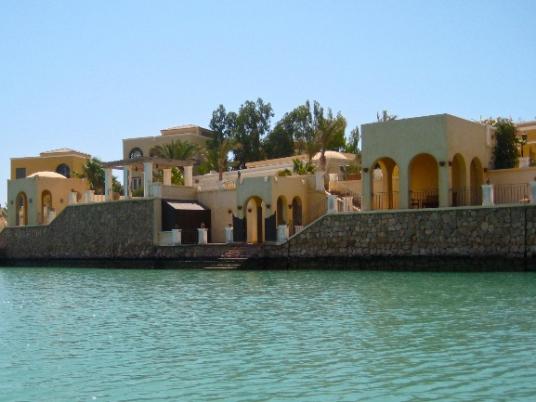At first, it sounded like an urban myth. A tiny Thai restaurant, supposedly run by Thai students from Al-Azhar, was said to offer delicious and cheap food somewhere near the dorms of the Islamic University. Months passed and the rumor kept popping up in various conversations, until I decided it was high time to discover whether or not this little jewel of a restaurant actually existed.
Well, it certainly does. In the concrete-filled Abasseya neighborhood, a few blocks away from the massive dormitories belonging to Al-Azhar, lies this tiny diner with space for barely five linoleum covered tables.
The restaurant Halal Bangkok is neither chic nor comfortable, with its pink bed sheet hung over the window to block the view of the street, its old plastic fan struggling to produce a breeze, its posters with highlighted Quranic verses and its tatty chairs.
But the ultimate test for a restaurant should be neither its decor nor its atmosphere but the quality and the taste of the food served.
And in that regard, Halal Bangkok can definitely compete with the Semiramis’ Bird Cage (a delicious Thai restaurant with a less delicious bill) or Zamalek’s Sabai Sabai, minus the soft lighting and the chilled atmosphere.
Once seated, your thirst will be quenched with a pink faraoula bil leben–a glass of milk with strawberry syrup–and a large menu in a cardboard cover with plastic dividers will make its way to your table. Inside is a photo album of all the dishes and specialties of the restaurant, with two pictures of fried rice or soup filling each page. The prices are handwritten on the right hand side of the picture, and are all between LE6.5 and LE13, for more extravagant orders. Some of the pictures inside the menu are crossed out with a sticker announcing that the dish is not available on that day–la youged–in Arabic.
I decided not to take any risks and ordered a tam yam soup, a favorite of mine made with lemongrass, beef, cilantro, Thai-bird chili and kefir lime. When the soup arrived, steaming and exhaling enchanting aromas, I knew it would be wonderful, even presented in a simple plastic bowl. It was light, authentic and delicious.
To accompany this scrumptious broth, I decided to have a plate of rice with green peas, bits of fried eggs and chicken strips, which was very filling and also tasty. The portions are very generous, but somehow I managed to swallow every last grain of rice without too much of a struggle. The next dish that was brought on my table was a chicken curry served on a side order of white rice, with thick slices of onions and carrots. This also was succulent, even though I was starting to feel a little over-full by this point.
As there are very few tables in the dining area, other customers randomly invite themselves to sit down with you, which leads to interesting and unexpected conversations, in Arabic only. Half of the customers are actually from Thailand, while the others are sub-Saharan Africans, all of them students at the nearby Al-Azhar University.
“I arrived in Cairo three years ago and started reading Islamic studies at Al-Azhar,” explains Rafiq, a waiter from Bangkok. “All the restaurant waiters study in Al-Azhar,” he adds in a slightly broken Arabic. The neighborhood is a melting pot of Malaysian, Indonesian, Thai, African and Central Asian people who inhabit this area because of its vicinity to the world famous Al-Azhar University.
A few blocks away, I notice three tiny Chinese restaurants of the same ilk, full of Chinese customers and most probably as cheap as Halal Bangkok. After devouring this gargantuan meal, I went up to the cashier to pay my bill, which came to LE26. At this point I bitterly regretted the absence of a delivery service, which would have spared me the slightly long taxi ride to Abasseya.
How to get there: Medinat el-Buhuth, in front of Taki store (which sells furniture).




